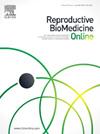Fertility preservation before sterilizing treatment: cryopreservation of both ovaries to restore endocrine and reproductive functions
IF 3.7
2区 医学
Q1 OBSTETRICS & GYNECOLOGY
引用次数: 0
Abstract
Ovarian cortex cryopreservation is now a validated fertility preservation technique. Autotransplantation of this tissue allows restoration of ovarian hormone function in more than 90% of patients, and birth of at least one child in 30% of transplanted women. In the case of very highly gonadotoxic treatments, it is recommended that ovarian cortex be cryopreserved as first-line therapy to safeguard future fertility. However, the ovary left in place runs a very high risk of being significantly altered. This raises the question of harvesting both ovaries, looking to restore fertility as well as endocrine function. Indeed, hormone balance in these cancer survivors may be recovered naturally for their entire lifetime. Autotransplantation could also be performed to restore hormone function in women with no wish to have children, with the sole purpose of improving their quality of life. Ethical and legal challenges exist and are discussed in this paper, but they do not constitute an argument against it. Clinical trials investigating this strategy are clearly needed, but this approach truly offers women the chance of having both endocrine and reproductive functions restored and maintained throughout their entire life.
绝育前保存生育能力:双卵巢冷冻保存,恢复内分泌和生殖功能。
卵巢皮层冷冻保存现在是一种有效的生育保存技术。这种组织的自体移植使90%以上的患者恢复卵巢激素功能,30%的移植妇女至少生育一个孩子。在高度促性腺毒性治疗的情况下,建议卵巢皮质冷冻保存作为一线治疗,以保障未来的生育能力。然而,留在原位的卵巢发生显著改变的风险非常高。这就提出了切除两个卵巢的问题,希望恢复生育能力和内分泌功能。事实上,这些癌症幸存者的激素平衡可能会在他们的一生中自然恢复。自体移植也可以用于恢复不想要孩子的女性的激素功能,其唯一目的是提高她们的生活质量。伦理和法律挑战存在,并在本文中进行了讨论,但它们并不构成反对它的论据。研究这种策略的临床试验显然是必要的,但这种方法确实为妇女提供了恢复和维持其一生的内分泌和生殖功能的机会。
本文章由计算机程序翻译,如有差异,请以英文原文为准。
求助全文
约1分钟内获得全文
求助全文
来源期刊

Reproductive biomedicine online
医学-妇产科学
CiteScore
7.20
自引率
7.50%
发文量
391
审稿时长
50 days
期刊介绍:
Reproductive BioMedicine Online covers the formation, growth and differentiation of the human embryo. It is intended to bring to public attention new research on biological and clinical research on human reproduction and the human embryo including relevant studies on animals. It is published by a group of scientists and clinicians working in these fields of study. Its audience comprises researchers, clinicians, practitioners, academics and patients.
Context:
The period of human embryonic growth covered is between the formation of the primordial germ cells in the fetus until mid-pregnancy. High quality research on lower animals is included if it helps to clarify the human situation. Studies progressing to birth and later are published if they have a direct bearing on events in the earlier stages of pregnancy.
 求助内容:
求助内容: 应助结果提醒方式:
应助结果提醒方式:


